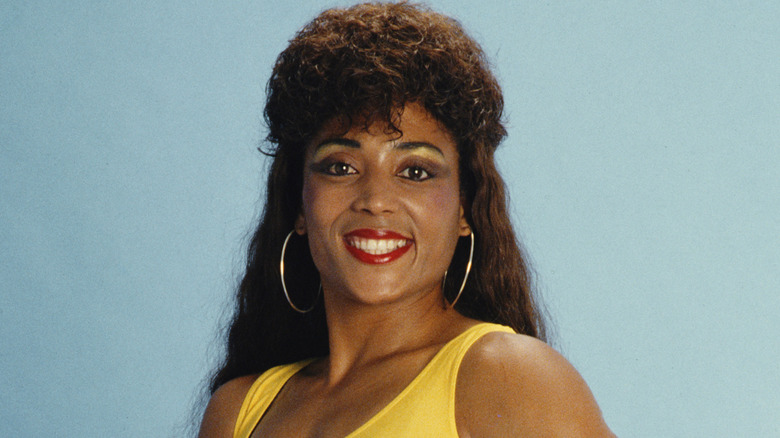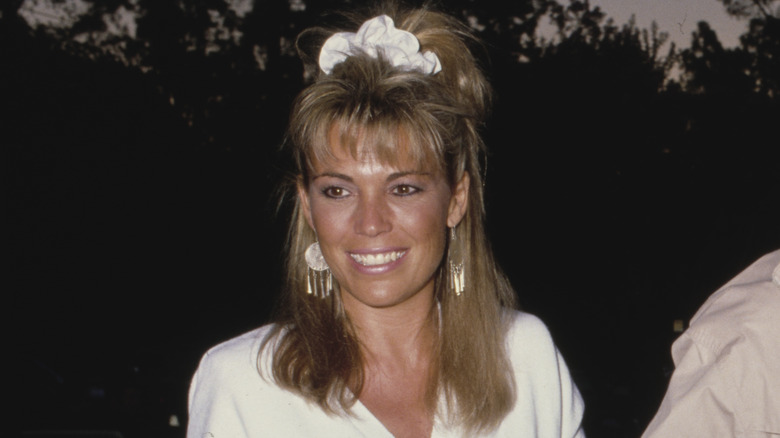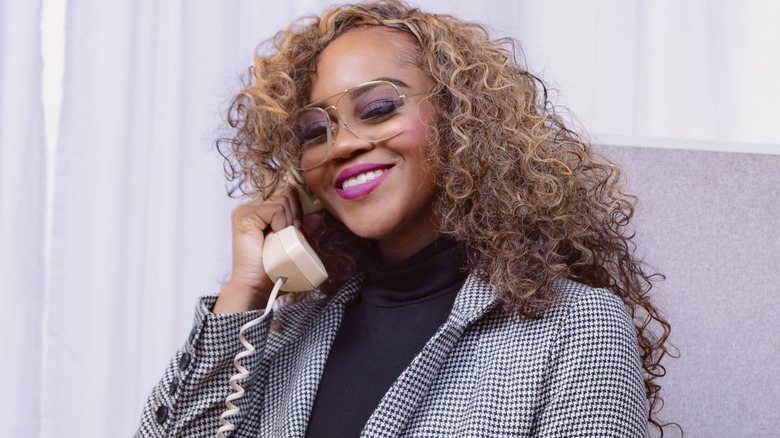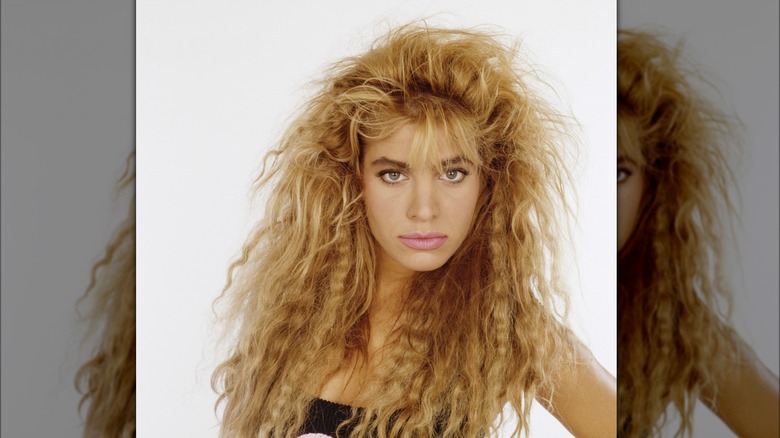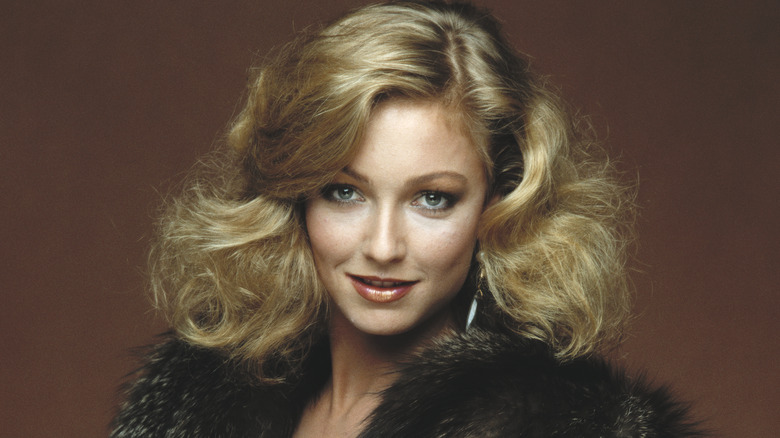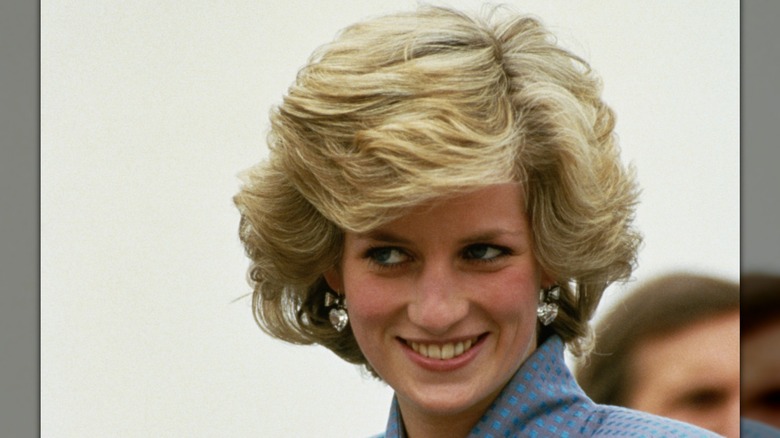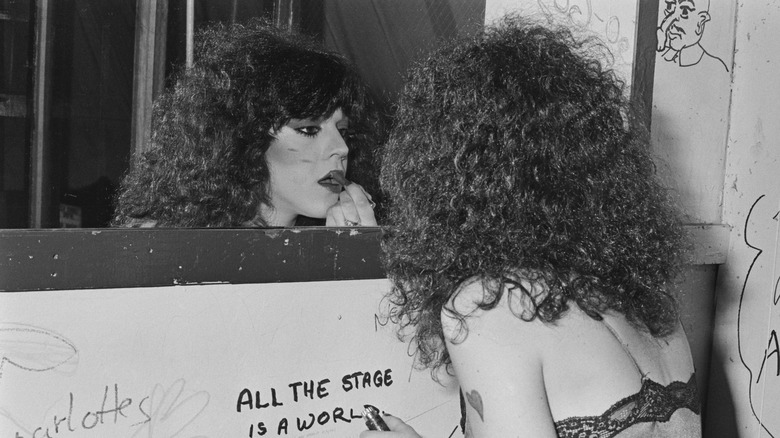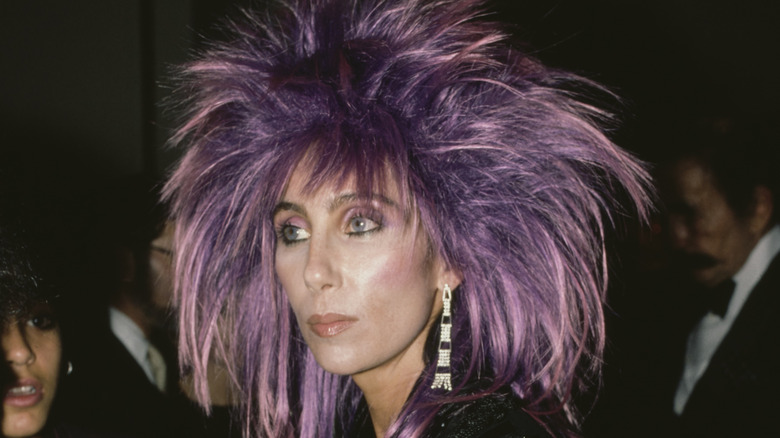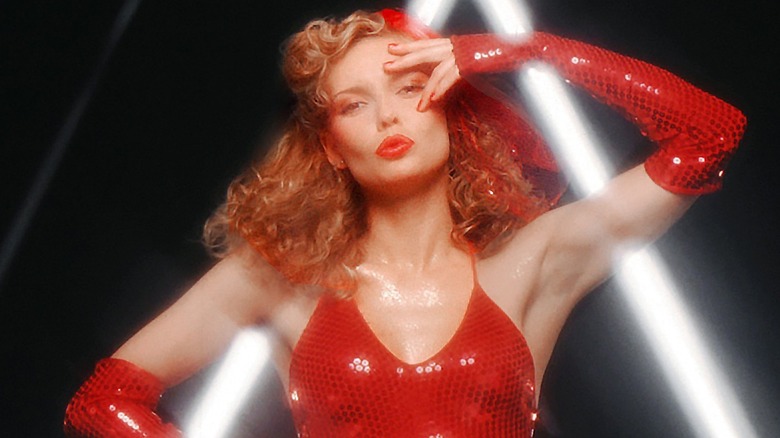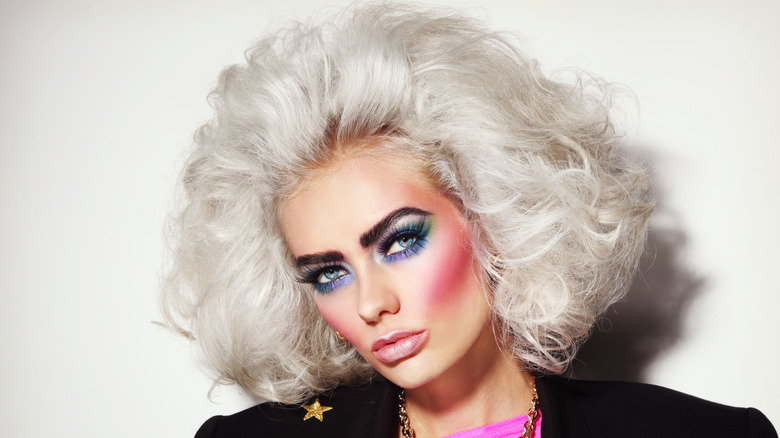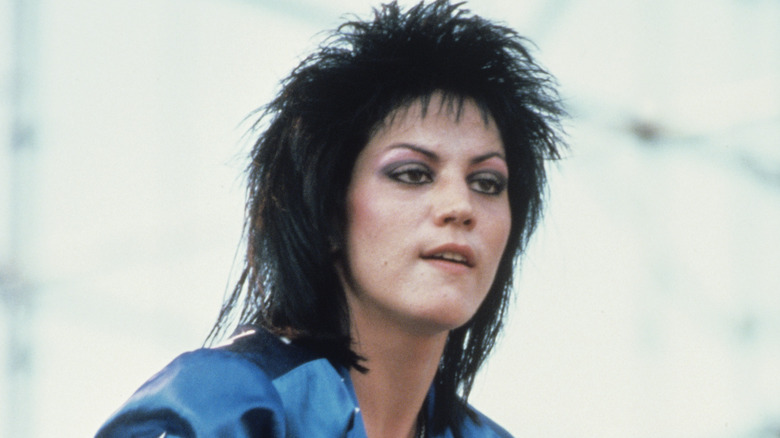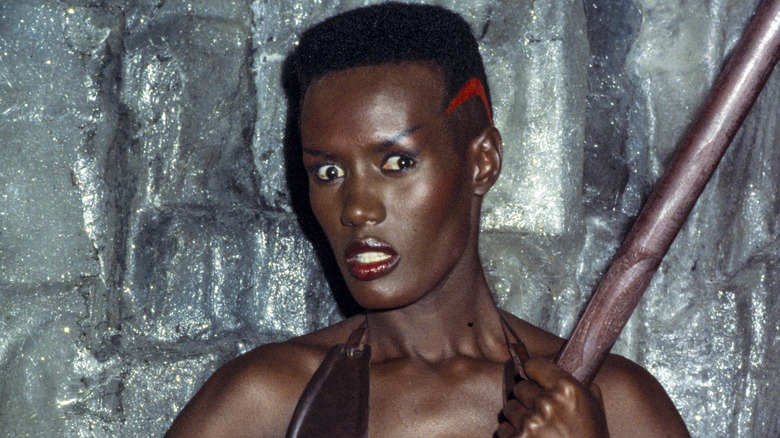The Most Iconic '80s Hairstyles (& Our Damage-Free Tips To Get Them Yourself)
The 1980s were a time when hair didn't simply speak louder than words — it screamed! The experimental vibe of the '80s was a declaration of independence, a rebellion against subtlety, and a testament to the philosophy that bigger was always better. This was an era where hair was elevated from merely a fashion statement to basically being an art form. Conversely, while the '80s gifted us with iconic and gravity-defying hairstyles that have remained memorable, the quest for dramatic locks often came at a cost — namely to the wellbeing of one's precious tresses. The intense styling tools and chemical treatments popular at the time didn't exactly take hair health into account. The result? A generation of hair that, while glorious in its flamboyance, sometimes bore the scars of a stylistic war waged daily in front of the mirror.
Lucky for us, times have changed. The world of haircare has transformed since the '80s and we can gladly leave behind frizzy perms and tons of hairspray. Today, our locks benefit from modern breakthroughs such as heat-styling tools with built-in temperature controls and protective coatings, as well as innovations like hair masks and deep conditioners that offer targeted solutions for everything from hydration to damage repair. Now, thanks to the wisdom of modern haircare, it's possible to achieve the bold '80s look while keeping hair damage to a minimum.
Throw it back (with a scrunchie)
Ah, the scrunchie — a timeless emblem of the '80s that gracefully adorned the wrists and ponytails of fashion enthusiasts — and that effortlessly married form and function. In an era defined by bold style choices, the scrunchie emerged as the ultimate hair accessory, a fabric-covered elastic ring that tamed unruly tresses with an air of casual chicness. From aerobics classes to school hallways, the scrunchie was omnipresent — a symbol of carefree spirit and sartorial panache. Throwing a scrunchie in your hair is probably the easiest way to get the '80s look; simply substitute your hair elastic for a scrunchie, and then have fun experimenting with its placement. Try wearing your ponytail to the side or in a half-up, half-down style for extra flair.
While the scrunchie is an iconic '80s fashion accessory and one that's easy to wear, one concern is hair breakage caused by friction damage, particularly for individuals starting with damaged, fine, or fragile hair. To minimize the risk of damage, avoiding excessive tension by investing in scrunchies made from friction-minimizing material like satin is essential, although luxurious mulberry silk is preferable if your budget allows it. Hair is also more vulnerable to breakage when your ponytail is placed in the same place for a long time, day after day. To minimize damage, rotate hairstyles and where you're placing your ponytail to prevent stress on specific areas of the hair.
The corkscrew craze
The '80s will forever be remembered as the era when a trip to the salon could transform straight locks into a cascade of glamorous curls that perfectly captured the essence of the time. Perms in the '80s weren't merely a hairstyle; they were a transformative experience that defined an entire era of fashion. The process typically involved winding sections of hair around perm rods, applying a chemical solution to break and rearrange the hair's internal structure, and then neutralizing the hair to set the new curl pattern. The goal was to create a head of high-volume, semi-permanent bouncy curls or tight corkscrew jheri curls, but unfortunately, the harsh chemicals in '80s-era perms notoriously lead to fried, frizzy, damaged hair.
Thankfully, there are many ways to get the '80s corkscrew look without harsh chemicals or heat tools. Since we'll be going heatless for the most damage-free option, it's best to plan ahead because it will take longer to achieve the look without a curling wand. After washing your hair, let it air dry until it's slightly damp. Apply a styling product, such as mousse or styling cream, to damp hair to ensure that your curls will hold. Section your hair and wrap small sections around flexi rods. Leave them in until your hair is completely dry, and then remove the rods. The healthier your hair is, the less likely you'll end up with limp, dead curls, so let this be your motivation to go heatless!
Come correctly crimped
The '80s were a time of dramatic self-expression with a strong youth culture that embraced rebellion against traditional norms and the more natural hippie look of the late '60s and '70s. This was an age where the artificial was embraced, and crimped locks, in particular, were a way for the younger generation to break free from more conservative hairstyles and express creativity. Pop stars such as Cyndi Lauper and Paula Abdul embraced funky crimped hair as part of their eclectic style.
Sadly, this hairstyle comes at a risk, as exposing hair to any heat styling tool exposes you to the cruel consequences of broken, frizzy, and dead hair. To reduce damage, start by preparing your hair for heat styling with a moisturizing conditioner to maintain hydration. Next, protect your hair with a heat-protectant spray to prevent damage and create a barrier between your hair and the heat. Invest in a high-quality hair crimping or hair wave tool that'll ensure heat is distributed evenly. Different hair types can withstand different temperatures, but hair should never be exposed to more than 400 degrees Fahrenheit unless at the hands of an expert, per Sojourn Beauty.
Separate your hair into sections and select a smaller division of hair — about 1 inch wide — to work on at a time. Clamp the crimping iron near the roots and hold it for a few seconds. Continue to move down the section of hair, crimping portions until you reach the ends. Finally, repeat the process on all remaining sections of hair.
Big blowout energy
In contrast to the edgier and more extreme looks of the '80s was the high-glamor big, big blowout. It was popularized by many celebrities during the decade, including Dolly Parton and Joan Collins. It was also heavily featured on the women of the popular TV show "Dynasty," a soapy drama about the lives of Texan oil tycoons. The hairstyle was associated with luxury, wealth, and excess. In the '80s, hair would be set with hot heat curlers, brushed out with a long brush, teased for volume, and lastly, set with lots and lots of hairspray. In short, there is nothing natural about this look. Hair was yanked, pulled, and brutally forced into position. Such harsh treatment, naturally, is deeply traumatizing to hair, leaving it damaged, weak, and broken.
Big hair wasn't just a style; it was a way of life — a rebellion against gravity itself! To achieve an ultra-glamorous blowout, prepare your hair with a heat-protecting product before going in with a blowdryer and round brush. Apply a volumizing spray at the root of the sections of hair that will be wrapped around the brush and lifted away from the scalp. You can also try flipping your hair upside down and blowdrying towards the ground for extra volume; gravity can help you to get that lift without violently tugging your hair. Seal your look with a generous helping of hairspray.
Feathered features
Feathered hair in the '80s was a hallmark hairstyle that combined a sense of effortlessness with a touch of glamour. The term "feathering" referred to a specific layering and styling technique that created soft, wispy layers around the face and throughout the hair, resembling the delicate feathers of a bird. To achieve feathered hair, hairstylists use a combination of layering and texturizing techniques. Hair is cut with shorter layers on top and longer layers beneath, creating a cascading effect. Although this '80s look was far less damaging to the hair than an intense chemical process like a perm, the style was often paired with the use of hot rollers or a round brush and hairdryer to achieve its manicured textures and high-volume effect.
Today, there are many products on the market that will help you get the look while reducing your exposure to damaging heat tools. Begin with taking a photo of a popular '80s icon, like Farrah Fawcett or Princess Diana, to your hairdresser so you can get the right textured and layered cut. Try using a volumizing spray at the roots to help achieve the lift and body associated with the look as you go in with a ceramic round brush and blowdryer. If your hair is naturally straight and heat-styling tools like curling irons or rollers cannot be avoided, make sure to use heat-protectant spray before going in to minimize damage.
Teased and wild
Teasing, also known as backcombing or ratting, involves combing the hair against its natural direction to create volume and height. Here, the goal is to make the hair appear larger than life. In the '80s, teasing usually involved using a fine-toothed comb or a teasing brush to backcomb sections of the hair at the roots. This process created a tangled, lifted effect. Some chose to cover teased sections with smoothed-over hair to conceal the tangled appearance on the surface, while those who preferred an edgier, wilder look did not.
While teasing can cause some damage, there are ways to minimize potential harm and protect your hair. Ensure your hair is completely dry before you begin the teasing process, as teasing wet hair can lead to more breakage. Look for a high-quality teasing comb that was designed for the process. Divide your hair into smaller, manageable sections. Tease one section at a time, as this will ensure a balanced volume distribution. Remember to use a gentle touch when teasing your hair and avoid aggressive backcombing. To emulate an '80s look, it's best to tease hair that's already curly or wavy, but this can work on straight hair, too.
Synthetic experimentation
Experimentation, theatrics, and attention-grabbing gimmicks have come back into style; just see the late-2000s hair pouf making an epic comeback. The '80s, however, gave birth to wild experimentation. When it came to hair, bright and neon colors were the order of the day. MTV, which highlighted the punk rock and new wave music scenes, showed that it wasn't just the blonds that were having fun anymore; those with neon-pink, electric-blue, or even fluorescent-green hair were now welcome to the party. Bold and vibrant hair colors were not limited to a specific gender in the '80s, either. Both men and women experimented with bright hues, contributing to a powerfully androgynous aesthetic.
Sadly, the harsh truth is that dyeing hair, especially with chemical hair dyes, can be harmful to the hair and scalp for several reasons. It's widely known that prolonged exposure to chemicals is one of the easiest ways to severely damage the hair. Bleaching and coloring strips away the natural moisture and oils from hair and can alter the structure of the hair shaft, leaving it dry and vulnerable to breakage, per MedicalNewsToday.
Want to try a bold and bright neon mane or a new romantic avant-garde hairstyle for the evening? Experiment with a wig instead of risking the ruin of your natural hair. Otherwise, you can opt for temporary hair dye (not semi-permanent) which rinses out in one to two washes and doesn't impact the hair shaft (via Natural Wellbeing).
Postmodern polka: throwing it far, far back
While the '80s birthed many looks, many creatives of the time took inspiration from earlier periods of history, such as the '30s and '40s. Reinterpretations of this era were most famously featured in many haute couture fashion shows including those by the eternally chic House of Chanel. Thus, hairstyles naturally followed suit and many popular hairstyles were re-interpretations of looks popular in previous decades.
Wartime victory rolls were a popular hairstyle to play with during the '80s. To create them, part your hair to the side and section off the hair in the front. Back comb that front section of hair and roll it inward by looping it around your thumb. To secure, use bobby pins and lots of hairspray, and smooth it over with a comb. Repeat on the other side. Make the look '80s by experimenting with teasing, curling, or crimping the remaining hair. Keep this style damage-free by rolling the hair carefully rather than tugging, and remember to use a heat-protectant spray and keep your heating tools at safe temperatures if curling or crimping the rest of your hair.
Bleached out
Peroxide-blond hair became an iconic fixture on the hair scene during the 1980s. The process of achieving peroxide-blond hair typically involves using hydrogen peroxide, a chemical that lightens hair by removing its natural color, which, in high concentrations, can be very damaging to the hair, leading to dryness and breakage.
Achieving and maintaining white-blond hair requires ongoing care and attention so that hair is able to retain as much of its health as possible. In the weeks leading up to bleaching hair, begin to regularly incorporate deep conditioner or hydrating hair masks. This will help fortify and strengthen hair, making sure that the overall health of your hair is in top form prior to exposing it to the harsh effects of bleach. To reduce the risk of over-processing hair and frying your locks completely, consider bleaching it in multiple sessions rather than trying to achieve the desired color at once. If you are bleaching your hair yourself, keep a close eye on the bleach as it processes. Check your hair regularly to ensure it doesn't lighten too quickly or become overly damaged.
Since going white-blond is an intense process for most people, seek the help of a professional hair colorist if possible. While you can do this yourself, a professional has the expertise to assess your hair type and condition and can recommend the best approach to achieve the desired color while minimizing damage.
Business in the front, party in the back
The mullet became a cultural phenomenon, and to some extent, symbolic of the '80s rock and roll style. It was associated with a rebellious and carefree attitude, aligning with the edgy and bold spirit of the decade. The classic mullet featured short hair on the sides and front, while the back had longer hair that extended down the neck (and sometimes to the shoulders). This hairstyle allowed for ample customization depending on the wearer's taste. Mullets can be worn in various lengths and styles; some have an overall soft and subtle look, whereas others have an edgier look with more striking differences between the front and back. To achieve this style, cut your top and side layers of hair short while keeping length in the bottom and back layers. If you don't want to cut too much hair off your top layers, you can emphasize the contrast by teasing your top layers to make them shorter and more voluminous, while keeping your longer layers smooth.
Careful consideration and proper haircare practices will help you get an '80s-era mullet without causing significant hair damage. Embrace your hair's natural texture whenever possible and minimize the use of heat-styling tools to prevent excessive dryness and breakage. Keeping the hair trimmed can prevent split ends and keep hair looking healthy and vibrant.
Cropped: high and tight
Androgynous hairstyles in the '80s were part of a broader cultural shift towards challenging traditional gender norms. It's easy to see why the short-cropped pixie cut continues its dominance in contemporary fashion and individual self-expression — it's one of the trendiest short hairstyles that goes beyond a normal bob. Politics aside, cropped hair can also create the alluring aura of a boldly powerful presence.
Cropped hair is more versatile than one might imagine and was worn in the '80s by all types of different women from diverse backgrounds. Depending on how cropped hair is styled, it can give off entirely different vibes. Just compare the images of poised and preppy Princess Diana in the '80s with her feathered crop in contrast with Grace Jones' edgy yet minimal buzz cut. If you want to copy Jones' incredible look, be prepared to head to the salon every two weeks to avoid overgrown hair. With slightly longer cropped cuts, you can afford to space out your salon visits with a little more time between each session. Regular cuts are also a great way to maintain hair health, since you'll be getting ahead on removing dead, split ends, but don't neglect your haircare altogether. You can swap frequent conditioning for once-a-week treatments to keep the hair from looking flat and greasy, but keep up those weekly treatments so the hair doesn't become dry.
